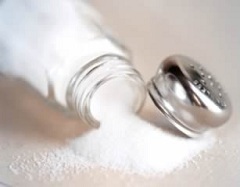Urolithiasis is a pathology associated with the formation of the urinary bladder, ureters, kidneys or urethra of stonesstones).Stones in the bladder are more often observed in men 45 years and over against the background of their prostatic diseases or urethral strictures, etc. The most widespread such stone formation is in the African and Middle Eastern countries, Indonesia, Burma, Thailand, etc.

Classification of stone formation
The stones can be of various shapes and shades, consistency and chemical composition, and also have multiple or single character. Small concretions are called microliths, large ones are macrolites, solitary stones are called solitary stones. There are several classifications and forms of the disease. According to the types of stones, pathologies can be of the following forms:
- Phosphate - when the pebbles are formed from phosphoric acid salts, these are quite fragile concretions, having a soft structure and a light gray hue. They usually appear as a result of violations of material exchange;
- Oksalatnymi - when the raw material for the stones are oxalic acid salts, these stones have a rough surface and brown color, they can scratch the mucous, which causes soreness and color the urine in a reddish color;
- Urine - formed on the basis of salts of uric acid, it is smooth concrements that do not traumatize mucous membranes, usually observed in the inhabitants of hot countries and occur against the background of gout or dehydration;
- Protein - representing protein impressions.
In addition, stones can be primary or secondary. In primary education, stone formation occurs against the background of urine stagnation in the urinary cavity. In the secondary form of the disease, stones form in the kidneys, and into the bladder cavity they get through the ureter.
In its pure form, stones are very rare, they often have a mixed basis: urate-phosphate, phosphate oxalate and other combinations.
What indicates the presence of stones in the bladder cavity
 The condition clinic indicating the stones in the bladder is rather ambiguous. When the stone only descends into the bladder cavity, the patient has renal colic, characterized by acute pain in the lumbar region, which can irradiate into the perineum, genitals or anterior femoral region. When you tap the edge of the palm in the kidney area, the patient observes a sharp pain, or the pain syndrome is already increasing. In addition to soreness, patients suffer a pathological change in the qualitative characteristics of urine: sand, various salts, impurities of blood, etc. can be found in it.
The condition clinic indicating the stones in the bladder is rather ambiguous. When the stone only descends into the bladder cavity, the patient has renal colic, characterized by acute pain in the lumbar region, which can irradiate into the perineum, genitals or anterior femoral region. When you tap the edge of the palm in the kidney area, the patient observes a sharp pain, or the pain syndrome is already increasing. In addition to soreness, patients suffer a pathological change in the qualitative characteristics of urine: sand, various salts, impurities of blood, etc. can be found in it.
If urine shows flaky flakes of light hues, the flow of urine disrupts the flow, and there is a strong painful sensation in the abdomenit is worthwhile to suspect the presence in the cavity of the bladder of pebbles that have a phosphate base.
In cases where the pebble has already descended into the bladder cavity, or has formed exactly in it, the symptoms will not manifest so brightly, although the experienced physician will still understand the pathology. The amount of bloody impurities and sandstone in urine will be insignificant, but the pain will manifest itself as much. Pain syndrome can be cutting or aching, it can be strengthened during sexual intercourse or urination.
When stones are able to move freely around the bladder cavity, there is a risk of a stone overlapping the mouth of the urethra, while the patient notices a sudden interruption of the urine stream at the time of urination.
To distinguish stands such signs of stone formation in the bladder:
- Syndrome of dull pain, often radiating to the penis or scrotum, worse with the urethra;
- Bloody impurities in the urine, which usually appear when the bladder has been emptied;
- Visual changes in urine, manifested as haze, thickness or odor;
- Rapid, painful and intolerable desire to go to the toilet;
- Unexpected interruption of the jet, when the bladder has not completely emptied.
In the case of an unreasonable change in the color of urine, the appearance of sediment or pain in the lumbar region, it is recommended to immediately visit the urologist to determine the cause of the changes.
Where does the stone come from in the bladder?
 This question is unambiguous and the only correct answer is not. Scientists identify a whole group of specific factors, due to the influence of which stones are formed in the bladder. The most significant of them is the non-observance of the water-salt regime. The overwhelming majority of researchers argue that urinary stone formation is promoted by excessive content of salts in the body. This does not mean that the salt comes only with food and drink. They can also accumulate in the body due to impaired sodium output by the kidneys. This can occur against a background of kidney pathologies.
This question is unambiguous and the only correct answer is not. Scientists identify a whole group of specific factors, due to the influence of which stones are formed in the bladder. The most significant of them is the non-observance of the water-salt regime. The overwhelming majority of researchers argue that urinary stone formation is promoted by excessive content of salts in the body. This does not mean that the salt comes only with food and drink. They can also accumulate in the body due to impaired sodium output by the kidneys. This can occur against a background of kidney pathologies.
Often, the causes of stone formation are caused by an infravesical obstruction, which is a violation of the urine flow due to various obstacles located below the bladder. Against the background of this phenomenon, the bladder can not completely emptize, why it stagnates urine, resulting in the formation of stones. Obstructions may appear due to:
- Sclerotherapy, hyperplasia or prostate cancer;
- Stenosis of the cervical neck;
- Cicatrization of the urethra;
- Stones or sand in the kidneys;
- Disorders of nerve function of the bladder;
- Foreign objects in the bladder( catheters, sutures, stents, cystocele or diverticula).
The formation of stones can begin against a backdrop of inflammatory bladder pathologies. To play a significant role in the process of stone formation in the bladder can also be the geographical residence of a person. Thus, in countries with a tropical climate, a greater number of patients with urolithiasis have been recorded than in the northern countries.
Therapy of urinary stone formation
 The therapeutic process is divided into arresting the seizure and general basic treatment. For arresting an attack, lytic mixtures containing spasmolytic substances are usually used. Among them, you can identify drugs like No-shpa, Baralgina, Spazmalgona, Papaverina and so on. Although it is more convenient and easier to take similar medications in the form of tablets, but the experience of physicians proves that the greatest effect is achieved with intramuscular or intravenous injection. Medicines of this kind contribute to relaxing the walls of the ureter, which facilitates the process of moving the stone along it. But these remedies eliminate only the symptoms of an attack, and do not cure the underlying illness.
The therapeutic process is divided into arresting the seizure and general basic treatment. For arresting an attack, lytic mixtures containing spasmolytic substances are usually used. Among them, you can identify drugs like No-shpa, Baralgina, Spazmalgona, Papaverina and so on. Although it is more convenient and easier to take similar medications in the form of tablets, but the experience of physicians proves that the greatest effect is achieved with intramuscular or intravenous injection. Medicines of this kind contribute to relaxing the walls of the ureter, which facilitates the process of moving the stone along it. But these remedies eliminate only the symptoms of an attack, and do not cure the underlying illness.
Conservative treatment of stones means observance of a correct diet and selection of the necessary medicinal preparations, suitable for the basic composition of the formed stones. Such therapy implies alkalinization of urine, as a result of which already formed stones are eliminated and new concrements can not be formed.
When urate stones are found in the urinary bladder, litholytic therapy is indicated, implying the dissolution of concrements through the administration of special preparations.
It is possible to get rid of stones in an operative way, although the problem is rarely resorted to surgical solution today, since it is possible to eliminate excrement in less invasive ways. When the size of the pebble is 0.5-2 cm, their fragmentation by laser or ultrasonic action is shown. It is possible to crush through a small puncture, i.e., by a contact method. After the stones are shattered, they are washed out with a special liquid.
Methods of stone formation prevention
Prevention of stone formation is based on nutrition with a lack of salted and smoked, fatty and spicy dishes, in general, it is recommended to minimize the consumption of fats and salt. The drinking regime also needs to be adjusted. It is normal if an adult consumes 1.5-2.5 liters of fluid a day, and there should be about 7-10 urination.
The prevention of stone formation includes treatment of inflammation of the bladder and possible pathologies of the prostate. If there are foreign bodies like stents and catheters, their timely replacement is necessary. Men over 50 are recommended to have an annual prophylactic visit to the urologist. Well, bad habits must be eliminated: quit smoking, do not consume alcoholic beverages, exclude the use of narcotic substances.



